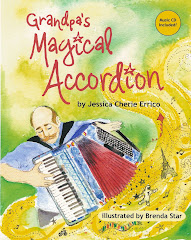
Disassembling an Accordion
Bass Mechanism
Part 1
If you’ve ever had an accordion that eventually
If you’ve ever had an accordion that eventually
developed sticky bass buttons, or had bass buttons that
had “fallen into” the accordion, you may have
been intimidated, as I was,
about ever trying to fix the problem.
~~~
If you’ve ever ventured a peek into the
bass mechanism of the accordion, it looks like
something designed by a mad scientist.
How anyone ever conceived of all that “stuff”
I will never know. It is a very intricate
and complex thing that you just
don’t feel like tackling.
~~~
After reading John Reuther’s book on accordion
repair, and visiting several other websites,
I attempted my first bass mechanism repair on
an older, "fixer-upper."
It wasn’t really that difficult as long as
I followed a few very basic guidelines.
~~~
Before you begin, it is important to have
~~~
Before you begin, it is important to have
some way of keeping each individual bass
button/rod identified
and in the correct position so that when
you go to reassemble it, each piece
goes back into the same place
from which it was removed.
This is absolutely essential!
~~~
Some people recommend making a “jig”
or a device with 120 “holders” that mimic
the layout of the bass buttons,
so as you remove each button/rod,
you put it into a slot
that corresponds to it’s normally
installed location on the accordion.
When I started my first disassembly I noticed
When I started my first disassembly I noticed
that inside the accordion, the guides
for the 6 rows of 20 bass button rods
are actually arranged into 3 rows
of 40 Bass button rods.
That is to say, that starting from the
bass strap side, the diminished and 7ths chord
bass button rods are contained together in
a “guide” that holds those 40 rods.
Next, the minor and major chord bass
button rods are contained together in a
“guide” that holds those 40 rods.
Finally, the Bass and Counterbass button rods
are contained together in a “guide” that holds
those 40 rods.
So inside the accordion what you have are
three rows of 40 rods. Hence, I decided
to make a holder or “Bass Button Jig”
that had 3 rows of 40 holders.
~~~
I chose to use “Jumbo Plastic Straws” and
Cardboard to make my jig.
 (Cardboard with 2 strips of double stick tape.)
(Cardboard with 2 strips of double stick tape.)
I chose Jumbo Plastic Straws rather than regular
straws because my first jig used regular straws
and the fit was a bit too tight.
The jumbo straws give you some room
to play with.
~~~
There are a lot of different possibilities here,
but I was trying to do it on a budget.
I cut the straws into two and a half inch lengths,
and used double sided tape to hold 40 of those
straw segments between
two pieces of 2-1/2 inch wide cardboard.

Once I had three such sections made,
I attached them to a box and labeled one side
“Bellows Side”
and the other side
“Bass Strap Side.”

Once the jig is made, you are ready
to actually begin your disassembly.
More in Part 2, to come.



What a labor of love!
ReplyDeleteAnd when you finish they sound good too.
Ok! I'm gonna try it. Thanks for your blog, it's given me courage although if my accordion was worth more I think I would be more trepidacious. I have a Soprani that plays great but I got it cheap. This morning I picked it up to practice and there was one note sounding when no buttons or keys pressed. I'm pretty sure its on the bass side, took it all apart and the only thing thats obvious is that in the bass mechanics it looks like some of the rods don't go back up completely once a button is released. My second problem (self-inflicted) is that I thought I could tell which finger was bent... and tried to fix it... now its no longer sounding the note but when I use particular bass buttons, something shifts and activates notes that I don't want to play. Probably isn't a very good description but I'm going to try taking it apart like you suggest and make sure everything is straight and then put it back together. It's either that or pay to get it fixed for as much as the instrument is worth. I figure I may as well learn something- wish me luck!!
ReplyDelete